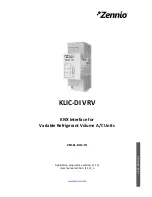
S5-115F Manual
Rules Governing the Use of the S5-115F
Figure 10-4. Response Time in the Case of Direct Access in the Interrupt OB 2
T
proc.
TPW
OB 2
LPW
OS
bef.
user
prog.
OS
after
user
prog.
OS
bef.
user
prog.
OS
after
user
prog.
Output response
Input signal
OS
bef.
user
prog.
OS
after
user
prog.
Read-in with LPW
Synchr. process interrupts
e.g. every 100 msec.
Explanation of Figure 10-4
OB 2 is started and the signal change is recognized if
•
input signal has changed
and
•
a synchronization point for process interrupts has been reached (at the latest after
100 msec. in the example) .
10.3.5 Response Times With the SINEC L1 LAN
The SINEC L1 LAN has a polling time which is a function of the number of data paths and the sum
of all transfer bytes. In addition, the SINEC L1 LAN has a safety time which must be greater than
the polling time. The safety time depends on the following criteria:
•
Desired error tolerance (the longer the safety time, the greater the error tolerance)
•
Desired response time in the event of an error (the shorter the safety time, the less error
tolerance).
The SINEC L1 response time consists of the following:
•
The intervals between the synchronization calls for SINEC L1
•
- SINEC L1 polling time (bus intact)
or
•
- SINEC L1 safety time (bus defective).
The Receive mailbox is read out
•
at long intervals in the PLC cycle
•
at short intervals in OB 13.
EWA 4NEB 811 6148-02
10-5















































